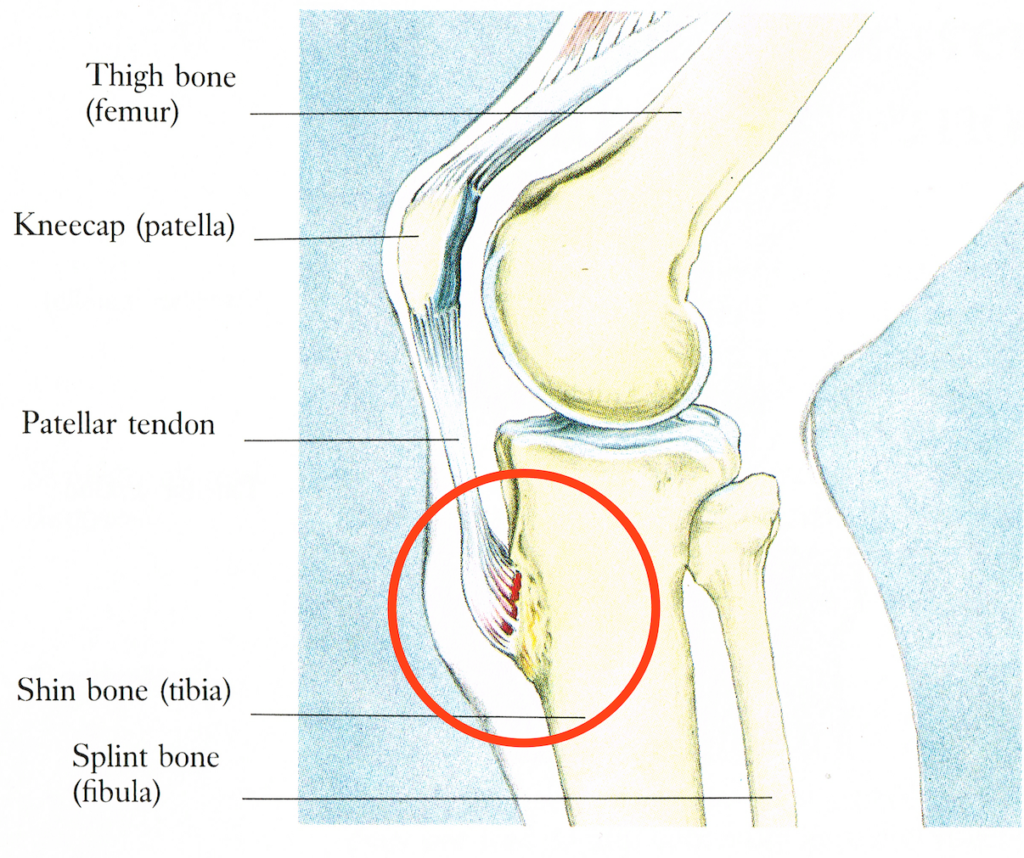Rapidly growing bones, combined with great love of high impact, reaching sports such as AFL, basketball and netball, can often lead to inflammation of the tibial attachment of the patella tendon, known as Osgood-Schlatter’s Disease. Ongoing repetitive stress on the tendon can result in micro tears to the tendon and damage to the bone itself.

Left unchecked and untreated, it leads to a bony protuberance on the tibia, disintegration of the bone causing intense pain for the athlete.
Symptoms
Symptoms include:
- Localised pain at the attachment point on the bone during and after sport
- Oedema (swelling) and tenderness below the knee both in the tendon and in the capsule that contains the patella.
- Pain that can be triggered by contacting the quadriceps against resistance.
- Pain made worse by the application of ice.
Generally, athletes between 10 and 18 years are most likely to develop the condition, and it is usually more common in boys.
A visible increase in size of the tibial attachment in either one or both legs.
Treatment.
There are a range of options which are beneficial depending on the severity of symptoms.
Active rest and heat, the use of topical pain relief creams, and a heat retainer in initial stages are helpful. Cessation of the activity provoking pain until symptoms subside and the use of Kinesiotape to support the knee and reduce pressure on tissue can also be helpful.
Shockwave and low level laser are also effective in reducing injury time, as is manual lymphatic drainage in reducing the impact of the condition.
Osgood-Schlatters disease rarely requires medical intervention, and frequently heals once the athlete reaches physical maturity. Problems in adulthood occur most commonly from loose bodies in the bursae that surround the knee.
However, an athlete who has Osgood-Schlatters Disease, may have several bouts of the condition prior to muscular-skeletal maturation.
References:
Sports Injuries, their prevention and Treatment, Renstrom and Petersen
Clinically Oriented Anatomy, Moore and Dalley.